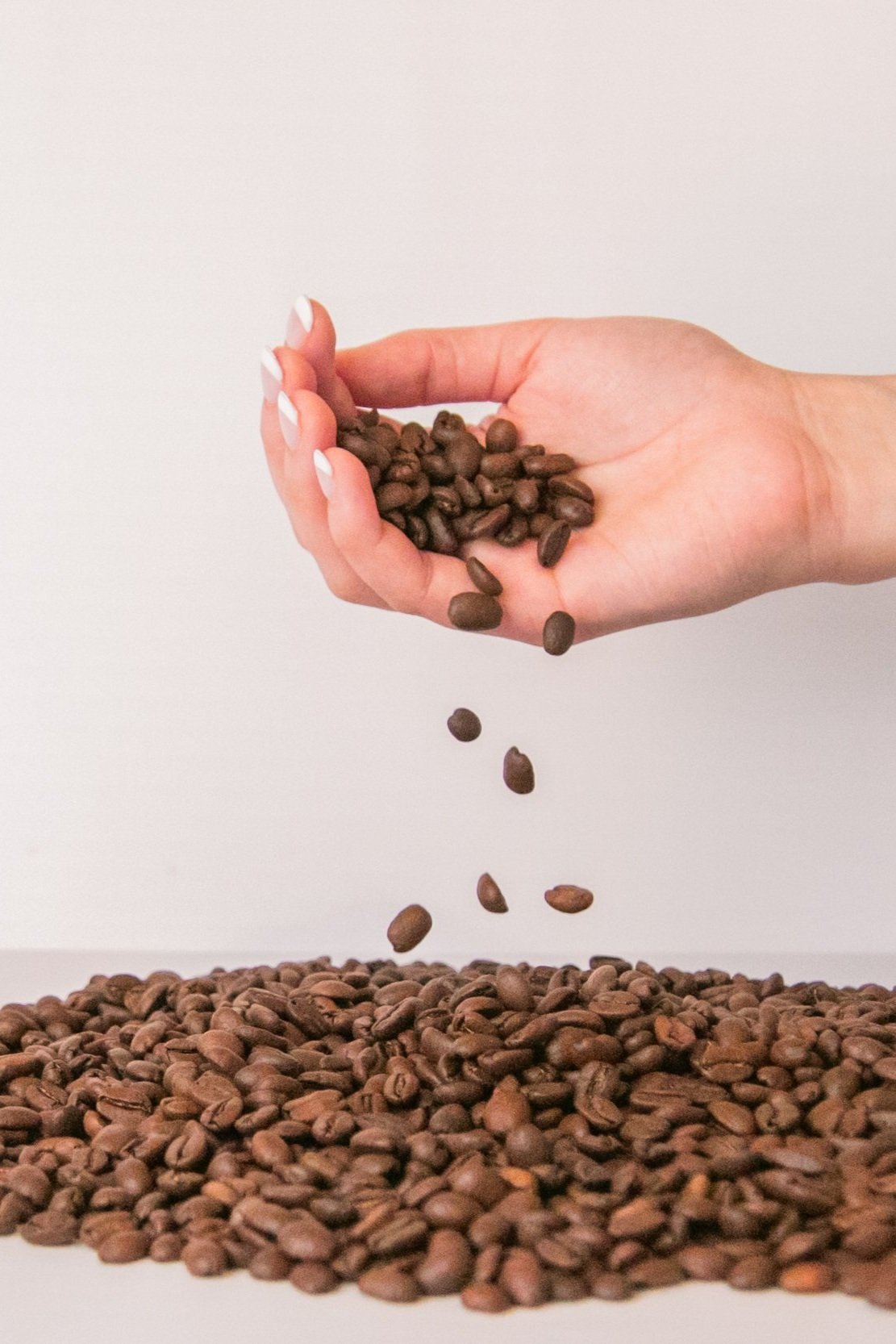From Farm to Cup
Coffee tends to be a staple part of the American diet. But do you ever stop and think about what really goes into your morning latte or the shot of espresso that helps you push through a long night of studying? Here are some coffee basics for you, so next time you stop by your favorite Exit 11 drive-thru, you can understand and enjoy the roots of your coffee.
Before diving into the world of coffee production, you must first understand how coffee is typically talked about. Discussing coffee types and flavors can be incredibly intimidating, especially if you don’t know the common language around it. When a connoisseur consumes a cup of coffee, they are going to first analyze its aroma, which is the scent of the coffee after it has been brewed. After that, they’ll taste the drink in order to examine its body, which is the weight or thickness of the beverage on your tongue. Acidity, which is another important factor, is about the quality and depth of flavor in a cup. These basic qualities are influenced in part by the roasting process of the beans.
Coffee falls into one of three categories: light roast, medium roast, and dark roast. Each of these corresponds with its body, acidity, and presence of flavor from the actual bean. There are over 800 different aromas and flavors of coffee, so it takes practice to be able to differentiate between them all, but hopefully after reading more about the importance of geographic location in coffee production, you’ll have a better idea of what’s in your cup.
Coffee is typically grown in tropical climates around the equator between the tropics of Capricorn and Cancer, which is an area known as the “bean belt.” The coffee plant is a bush-like tree that grows bunches of cherries. When the cherries are ready to be harvested, they become a rich red color. Inside each fruit are two coffee beans. Picking the cherries too early or too late will completely alter the flavor of the beans, so farmers must be well-versed and have a keen eye in order to determine the right time to harvest. Coffee trees take around a year to begin producing white flowers, and then another four years to produce fruit. Based on the amount of beans produced, these trees will not be commercially ready for ten years after planting.
The Four Types of Coffee Beans
There are four types of coffee beans: Arabica, Robusta, Liberica and Excelsa. Arabica beans are the most common, making up about 60% of the world’s coffee beans. This species is typically grown at high altitudes in areas with plenty of rainfall and shade. They’re the easiest of coffee trees to care for due to their size and ease when pruning, or trimming, the leaves or branches. Arabica beans are known for having full flavors and aromas. Robusta are the second highest-produced coffee beans. They are very hardy and immune to many diseases, so they can grow under harsh circumstances. They tend to be found in hot climates with irregular rainfall and a variety of altitudes. They contain around double the caffeine of Arabica beans and typically have harsher flavors and smoother textures with hints of chocolate. Liberica and Excelsa beans are relatively rare. Liberica plants are known for producing oddly shaped beans that have a unique aroma that is smoky, fruity, and floral. Although there is debate, Excelsa beans have recently been categorized as a type of Liberica bean. They are only found in South East Asia.
Aside from the type of bean and variety of plant, location alters the taste of coffee as well. The chemistry of the soil, climate in which the plants are grown, the amount of rainfall and sunshine the trees receive, and the altitude all contribute to bean flavor. This combination of factors is so complex that coffee can taste completely different depending on where you source your beans from.
In North America and the Caribbean, the volcanic and rocky soils and immense rainfalls produce rich, full-bodied coffees. Hawaii, Mexico, and Puerto Rico are important countries in coffee production from these regions. In Central America, countries like Guatemala and Costa Rica cultivate beans with spicy, complex, and fruity flavors. Colombia and Brazil, both some of the most prevalent coffee producers in the world, produce sweet, caramelly coffee with chocolatey notes. It has a low acidity and balanced body. These aromas and flavors are due to the rugged terrain and wet, tropical climate of South America. East African coffee beans are known for being fruity and sharp, especially in Ethiopia and Kenya. The Arabian Peninsula, in countries like Yemen, is known for producing unique coffee that has deep, rich flavors because of the arid climate. Indonesia and Vietnam, two coffee capitals of the world, are known for full, rich coffees with a smoky taste and mild acidity, due to their warm, damp climate. As the multitude of countries and regions that produce coffee show, understanding geographical differences is crucial in analyzing coffee aromas and flavors and can provide unique insight on what you drink each day.
At Exit 11, we strive to craft exceptional coffee through the sourcing of the finest beans.
Our coffee beans are carefully selected from four locations: Colombia, Ethiopia, Peru and Costa Rica, each with unique characteristics that provide distinctive flavors.
Colombian Medium Roast
Our Colombian coffee is found in the Huila region of eastern Colombia. Our Colombian beans are Rainforest Alliance Certified, which means our farm is part of the initiative to protect forests, improve the livelihoods of farmers and surrounding communities, and mitigate and adapt to the climate crisis. Our farms were also given Denomination of Origin status, which conveys the significance and specificity of qualities and characteristics within a certain region. Our coffee farms are located at around 1600 meters above sea level with nitrogen-rich soil, giving it strong, chocolatey and nutty notes.
Ethiopian Medium Roast
Our Ethiopian coffee comes from the Sidamo region, which is one of the three trademarked coffee regions within Ethiopia. Sidamo resides at around 1700 meters above sea level, has fertile soil and receives plentiful rainfall throughout the year, which allows the region to produce high-quality, well-rounded flavors. Our Ethiopian coffee is organic-by-default—farmers typically use very few, if any, fertilizers and pesticides, and most work is done manually without machinery.
Costa Rica Medium Roast
Our Costa Rican beans, which are used in our cold brew, are from the Pérez Zeledón region in southern Costa Rica. These beans are grown at around 1350 meters above sea level in soil that is enriched by volcanic ash from the surrounding volcanoes. Our beans are Arabica beans that do well in high altitudes with high rainfall and humid atmospheres. Costa Rican coffee is often considered very bright and vibrant with fruity notes.
Peruvian Dark Roast
Our Peruvian coffee comes from Arabica beans grown in the Cajamarca highlands of northern Peru. Our farms in the San Ignacio district of Cajamarca prioritize peaceful coexistence with nature, including the native tapirs that roam the land, as well as conscious coffee production, making them a Certified Organic coffee chain. Grown at around 1650 meters above sea level, our beans are dark roasted with floral notes of orange, lemon and chocolate.
Whether it’s the rich chocolatey notes of our Colombian beans or the vibrant fruitiness of our Ethiopian beams, each sip tells a story of the craftsmanship, sustainability and passion that goes into Exit 11 Coffee. We invite you to visit one of our drive-thrus today to taste the journey from farm to cup first-hand. Tap or Click Here to find an Exit 11 Drive Thru near you!







